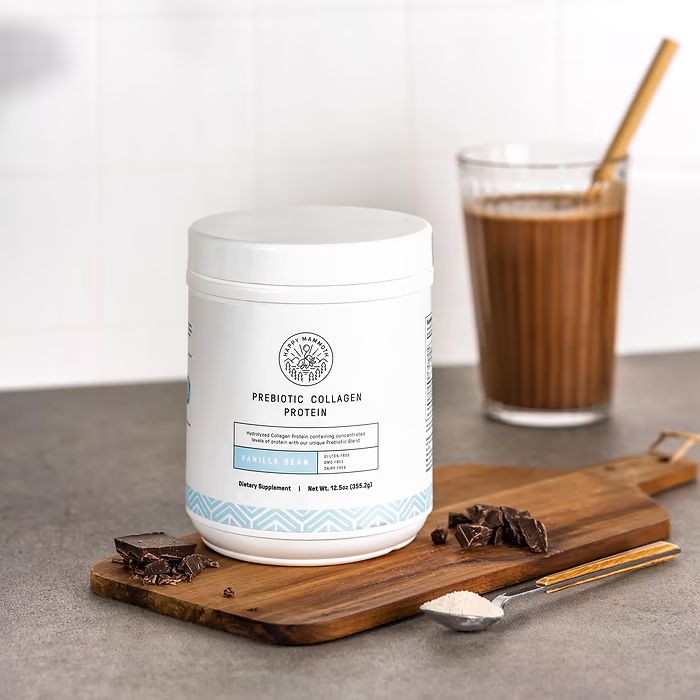In the world of athletics, age has frequently enough been seen as a barrier, a natural limit that inevitably hinders performance. However, as more seasoned athletes continue too challenge the status quo, there emerges a compelling need for specialized support tailored to their unique requirements.Enter “Power Life High Impact Endurance: Recovery Support for Older Athletes,” a groundbreaking approach that not only recognizes the resilience of mature athletes but also equips them with the tools they need to thrive. This article delves into the importance of recovery in enhancing endurance, exploring how innovative strategies and products are designed to bolster physical resilience and optimize performance for those who refuse to let age define their capabilities. Join us as we uncover how the right support can make all the difference in the pursuit of athletic excellence, nonetheless of the years spent on the treadmill of life.
Understanding the Unique Recovery Needs of Older Athletes
As athletes age, their bodies undergo a series of physiological changes that alter their recovery dynamics. Older athletes often experience decreased muscle mass,slower metabolism,and diminished joint versatility,all of wich can impact their training and recovery. to effectively support their recovery, it is essential to integrate strategies that cater to these unique needs. Emphasizing balanced nutrition, hydration, and adequate rest becomes even more critical. Nutrients such as protein, healthy fats, and antioxidants play a vital role in rebuilding muscles and combating inflammation. Incorporating foods rich in Omega-3 fatty acids, like salmon and flaxseeds, can substantially enhance recovery and overall health.
Along with nutritional adjustments, older athletes should consider age-appropriate recovery techniques that facilitate healing while minimizing injury risk. Incorporating active recovery methods, such as gentle yoga or swimming, promotes circulation and muscle relaxation.Another key aspect is the use of therapeutic modalities like foam rollers or massage therapy, which can target specific areas of tension and soreness. Below is a simplified overview of effective recovery strategies tailored for older athletes:
| recovery Strategy | Description |
|---|---|
| Hydration | Maintaining optimal fluid levels to aid in muscle function and recovery. |
| Active Recovery | Engaging in low-intensity exercises to promote blood flow and reduce soreness. |
| Nutrition | Focusing on protein intake and antioxidant-rich foods for muscle repair. |
| Sleep | Ensuring quality sleep to bolster hormone production and recovery processes. |

Nutritional Strategies for Enhanced Endurance and Recovery
For athletes over the age of 50, tailoring nutritional intake to improve endurance and facilitate recovery is crucial. Emphasizing a balanced diet rich in whole foods can make a meaningful difference. Key components include:
- Complex Carbohydrates: Whole grains,fruits,and vegetables provide lasting energy sources for extended workouts.
- Quality Proteins: Lean meats, fish, legumes, and dairy support muscle repair and growth.
- Healthy Fats: Avocados, nuts, and olive oil help reduce inflammation and enhance joint health.
furthermore,hydration plays a pivotal role in both performance and recovery.Older athletes should focus on adequate fluid intake, considering a strategy that includes:
- Electrolyte Balance: incorporate drinks with sodium, potassium, and magnesium to maintain optimal hydration levels.
- Post-Workout Shakes: Protein shakes blended with fruits can provide a quick source of nutrients needed for post-exercise recovery.
| Nutrient | Function |
|---|---|
| Carbohydrates | Fuel for endurance activities |
| Proteins | Muscle repair |
| Fats | Anti-inflammatory benefits |
| Electrolytes | Maintaining hydration and nerve function |

Incorporating Effective Recovery Techniques into Training Routines
To maximize performance and longevity in their athletic journey, older athletes can seamlessly integrate effective recovery techniques into their training routines. Emphasizing recovery is essential for reducing injury risks and enhancing overall training benefits.Some practical methods to consider are:
- Active Recovery: Engage in low-intensity workouts like walking,cycling,or swimming to promote blood circulation and muscle relaxation.
- Stretching and Mobility Work: Incorporate dynamic stretching before workouts and static stretching afterward to maintain flexibility and reduce muscle tightness.
- Nutritional Support: Focus on a diet rich in protein,healthy fats,and antioxidants to aid muscle repair and replenish energy stores.
- Hydration: Regularly drink water and electrolyte-enriched drinks to support recovery and reduce muscle cramping.
- Sleep Optimization: Prioritize quality sleep by establishing a consistent nighttime routine, as restorative sleep is crucial for muscle recovery.
Older athletes should also consider utilizing technology and therapies designed to enhance recovery. Wearable technology can monitor heart rate variability and sleep patterns, helping to tailor training intensity based on recovery status.Additionally, therapies like cryotherapy and massage can promote muscle recovery and reduce soreness. Here’s a quick comparison of popular recovery therapies:
| Therapy | Benefits | Considerations |
|---|---|---|
| Cryotherapy | Reduces inflammation, accelerates recovery | May cause discomfort; not suitable for everyone |
| massage | Enhances circulation, reduces muscle tension | Costly; requires scheduling |
| Foam Rolling | Helps release muscle tightness, improves flexibility | Can be painful, requires proper technique |

Mindfulness and Mental Resilience in Athletic Recovery
Incorporating mindfulness practices into daily routines can significantly bolster mental resilience during the recovery process for older athletes. This intentional focus on the present moment helps to foster a deeper connection to both the body and the mind, enabling athletes to understand and address their physical and emotional needs more effectively. By embracing techniques such as meditation, deep breathing, and visualization, athletes can alleviate stress and anxiety, paving the way for healthier recovery outcomes. Here are some mindfulness practices that can be beneficial:
- Meditation: set aside time each day for guided or unguided meditation to cultivate inner calm.
- Breathing exercises: Engage in controlled breathing to regulate emotions and reduce tension.
- Mindful movement: Incorporate yoga or tai chi to blend physical recovery with mental clarity.
- Gratitude journaling: Reflect on daily accomplishments and positivity to enhance emotional well-being.
Furthermore, building mental resilience is essential for navigating the unique challenges that come with aging in the athletic realm. Training the mind to accept setbacks as part of the journey can lead to improved performance onc an athlete returns to their sport. Establishing a supportive community can amplify this resilience, helping athletes share experiences and strategies for facing adversities together.A well-rounded approach to recovery should include:
| focus Area | Benefits |
|---|---|
| Social Support | Encourages motivation and reduces feelings of isolation. |
| Positive Self-Talk | Promotes a growth mindset and boosts confidence. |
| Consistent Reflection | Helps identify patterns and fosters adaptability in training. |
| setting Realistic Goals | Encourages achievable milestones,enhancing satisfaction. |
Future Outlook
As the sun sets on the journey of athleticism, it’s essential to recognize that performance is not merely a testament to our physical prowess, but also a reflection of the care we extend to our bodies, especially as we age. ”Power Life high Impact Endurance: Recovery Support for Older Athletes” serves as a beacon for those who continue to chase their fitness aspirations while navigating the nuances of aging.
With its unique blend of nutrients designed to bolster recovery and enhance endurance, this supplement provides a vital resource for older athletes seeking to bridge the gap between passion and performance. Whether you’re sprinting through a morning run, cycling along scenic routes, or engaging in spirited matches, finding the right support is key to sustaining your athletic longevity.
Ultimately, embracing the blend of effort and recovery paves the way for joy in movement, allowing us to relish in the thrill of challenge without compromising our well-being.As you lace up your shoes and step onto your field of dreams, remember: with the right support, every stride can lead to new heights, and every finish line is just the beginning of your next adventure. Here’s to a robust, fulfilling journey of athleticism—one purposeful step at a time.



